The Is Language
“We seldom realize, for example, that our most private thoughts and emotions are not actually our own. For we think in terms of languages and images which we did not invent, but which were given to us by our society.”
-Alan Watts
“From the point-of-view of individual language-users, language is a 'given' - we don't create the system for ourselves. Saussure refers to the language system as a non-negotiable 'contract' into which one is born."
-Daniel Chandler, Semiotics For Beginners: Signs
“Ever since the “linguistic turn” in philosophy, about a century and a half ago, a general fact about language has become more and more obvious: language does not just represent the world, it co- creates it, or at least certain important aspects and ranges of it.”
- Ken Wilber, Integral Semiotics
We’re born into a language. It comes with biasses and assumptions. We don’t routinely wonder whether or not they properly suit our personal preferences. Before we even know what signifiers are, we’ve been using them for a long time. We inherit our native tongue. We don’t engineer the linguistic system ourselves.
But, what if?
Years ago I began creating a constructed language, called Is. It’s part art project, part thought experiment. Artisically, it has some unusual elements I appreciate. Conceptually, it’s a puzzle my mind enjoys tinkering with.
NOTE: I’m not a linguist, this is a passion project.
What follows is a brief introduction to the inspiration behind creating Is, and a tour of some basic features. For instance,
1. Directional signifiers - Words can be pointed in different directions to enact different meanings.
2. Altitudinal signifiers - Words can be tuned to various depths.
3. New signifiers - The fun of making up new words. (When something significant goes unsignfied, it’s a sign it needs a symbol). The difference between language that’s passively acquired vs actively created.
4. Fixed spelling - When you make your own language, you get to address personal pet peeves. In Is, it’s nearly impossible to mis-spell a word. There’s a one-to-one correspondance between letter and sound.
So far, I mostly use the Is language in my paintings, which have featured the script in the plumage of birds and various ornamentations. It’s also made appearances in some of my pop music. I recently began composing some new chamber music with lyrics in Is. The language is a work in progress, often in flux, so I don’t post a ton of stuff on line. I hope to publicly share the lexicon, grammar, allow folks to download the font I use to write in Is, etc.
Now, onto the Is.
1. Directional Signifiers
In Is, opposites are bundled into a single word. That one word can be pointed in two directions. So the word for yes is also the word for no. It’s one word (signifier), just pointed in different directions. You literally just flip it, like a mirrored reversal. For example, pointed the first direction, it means yes:

Pointed in the second direction, it means no:

One word, two directions. It’s a straightforward inversion. The phonemes are flipped. Imagine having a recording of this word. Play it forward, it means yes. Play it backwards, it means no. Technically, in the Is language the directions are not considered forward or backward. They’re just two equal, but distinct directions. The hypothetical native speaker would be able to invert them perfectly, in a sonic flip.
[I have a terrible accent in Is, for the record, but to get a sense of what it might sound like for a native speaker to toggle between directions in words, just play them in reverse in any audio program].
Somewhat strangely, I first became inspired to explore directional signifiers after a meditation experience in which my body dissolved. It just kinda vanished like vapor. What was left was just an awareness that expanded out as a field of teeming, animate consciousness. There was no distinction between my subject (Stuart) and objects (the wall, the floor). The objects were gone as well. It was a strong shift in perspective. Actually, it shocked the shit out of me. Once I re- assembled a body it took me months to come to terms with the experience.
One of the after-effects was that I felt like the experience didn’t line up with my language. The subject / object split is a basic filter I have as an English speaker. So basic I didn’t much notice it. It’s one of the lenses I’d always used to view experience. “I” am in here, on this side of the boundary, and “that” is out there, on the other.
Whatever is not my subject, is an object.
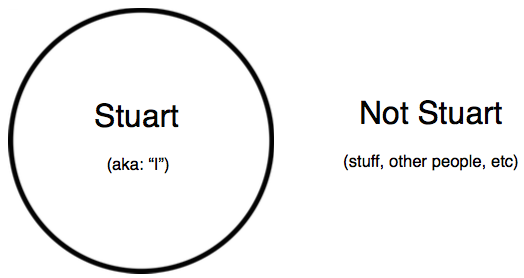
It’s called subject / object duality because those are two things: I and Not-I. And that was my experience of reality. It had an inside (me) and an outside (everything else). Until it didn’t.
In this experience during meditation, it was all Subject. Not all Stuart, but all awareness. The “I” was no longer Stuart, it was just that field of awareness.
So that made me wonder. Is that boundary of duality really there, or is duality just a frame I inherited? If I had inherited a language with a completely different set of frames, another kind of bias (say, one of unity), would I experience a different reality? How much of my experience is colored or even determined by these linguistic filters?
I wouldn’t know. I’ve never tried another system. I had nothing to compare it with.
What if instead of trying to fit my experience into my language, I went the other way. What if I tried to create a language that more closely approximated my experience? Would that even be possible?
And that’s how this wacky shit started. One day I’m half-assing my way through a Zen retreat, my body goes AWOL, and the next thing I know I’m con- langing.
So. Jumping back to the idea of Directional Signifiers in Is. They are an experiment in engineering some different assumptions. There’s still a bias, but instead of subject / object duality, the default is unity, or bundled complemntarity.
In the Is language, something and nothing are like twins. They are tethered to one another, a dimensional diad.
Much of the basic vocabulary is built this way. You have one word. But you point it this way, it means light. Point it that way, it means dark.
That was my first step in tinkering with filtering. If nothing else, this felt like it might be a closer match to my emotional experience. A little less like smashing round experiences into square signifiers.
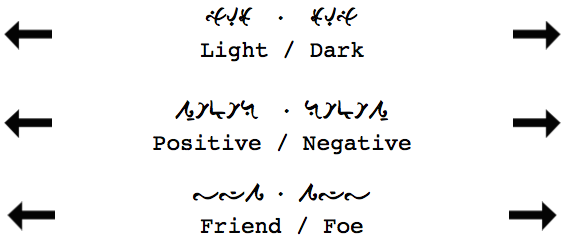
It’s not that I necessarily think a subject / object bias is wrong, or bad. It’s just a particular bias. I wanted to try something different. A new tilt. Any language comes with assumptions. The point for me was, could I create ones that might better fit my experience?
Directional signifiers are a chinese finger trap between opposed concepts such as inside / outside, us / them, friend / foe and so forth.
I find it fun to imagine what kind impact this might have on a native speaker. If you were born into this language, how might it shade experience? How would it act on one’s interpretration of that experience?
I like to imagine a language predicated on underlying unity, where opposites are bundled complementarities.
I’m not fluent in Is, although I’d love to be one day. But working on the langauge helps my mind expand a bit, and keeps me vigilant in minding the ways I may be compressing or collapsing reality to make it fit my inadequate symbol system.
2. Altitudinal Signifiers
I think of directional signifiers as the horizontal axis. There’s also a vertical axis, as words have altitudes. First I’ll introduce the idea of altitudes in English, and then I’ll give an example in Is.
This idea of using altitude in Is arises from thinking about the way -as an English speaker- I’ve used static signifiers to denote dynamic concepts. Take God, for instance.
I’ve had a concept of God since I was maybe four or five years old. I have a concept of God now, as a forty-four year old man. In that forty year spread, my notions of God have changed dramatically. I hope it’s because I’ve grown and deepened. But whatever the cause, things have shifted a lot.
When I was little kid, God was a bearded dude on a cloud. All-powerful. When I was a teenager he took on qualities more like a supreme court Judge. In my twenties, God became relative Spirit, refracted uniquely through each culture and epoch in history. In my thirties, God morphed into a decidedly non- anthropomorphic Enigma that spontaneously arises as Everything moment-to-moment. And now? at 44?
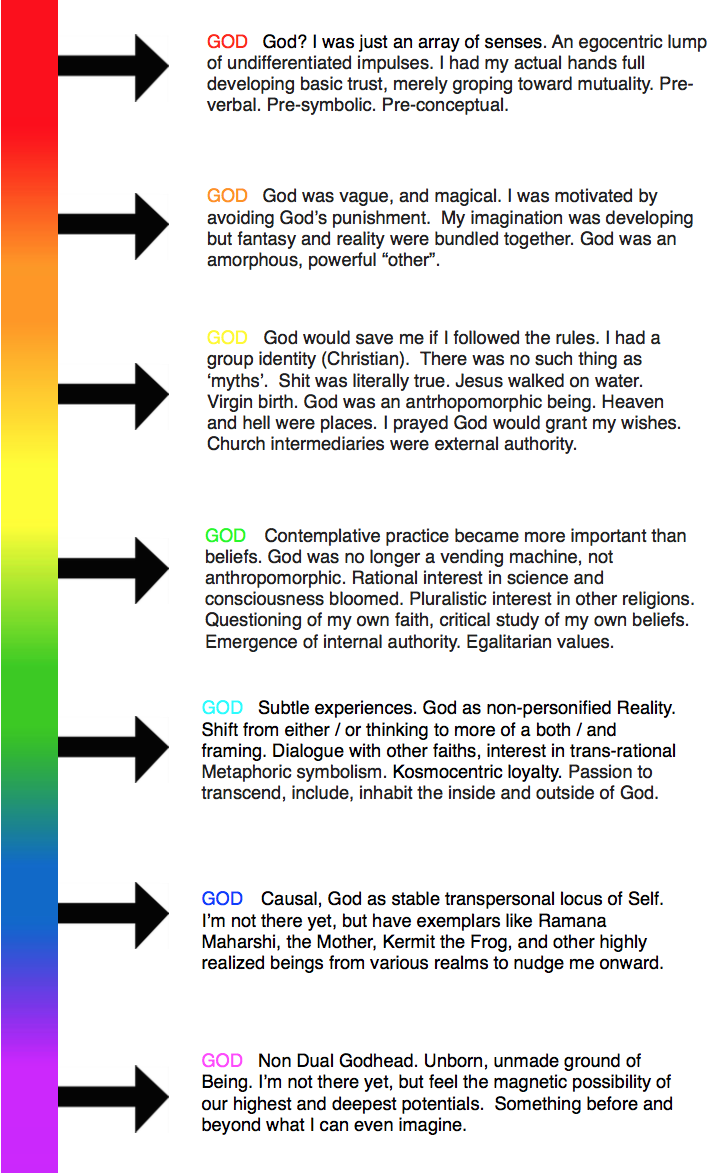
I realize God is my wife (Hi, honey).
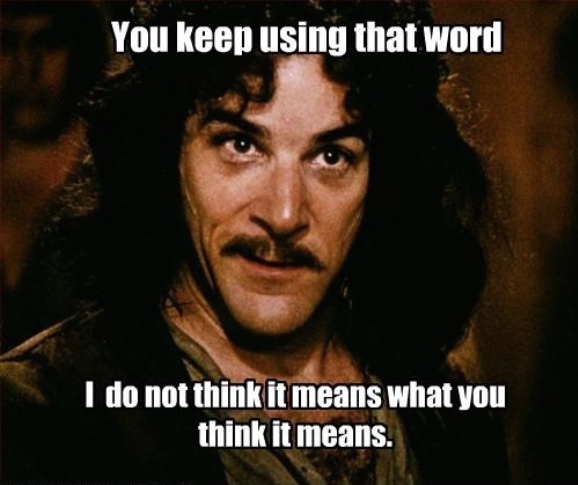
The point is, same word (signifier) was used to denote totally divergent concepts (signifieds). Seven different world views, all using the same signifier.
To have one word representing such disparate concepts is confusing, kinda weird, and doesn’t make much sense to me. I understand how this type of linguistic situation (one signifier saddled with many referents / meanings) comes about historically. Our shared inner reality changes and develops over centuries, but the correlating signifier does not. We don’t have meetings where we collectively stop to check and make sure our advancing inner significance remains in alignment with our outer signifiers.
Until now!
Since this language is an art project, I get to be semantically promiscuous. The fun is in exploring other options available that might avert that confusion and maybe even open up new bandwidths of expressive range.
So in Is a word like God has a vertical dimension. It can be tuned to distinct depths. Depth is an intrinsic value of the langauge, inflected in seven altitudes.
Imagine a flag pole. A word -any word- is the flag. In Is it can be raised or lowered to different elevations. It can blow one direction, or the other.
This depth-value is another default assumption, or design feature in the way the language parses reality. In Is, a signifier -like signficance- can be located at various depths.
Next let’s look at an example of how that works in Is by looking at a word that doesn’t have an equivalent translation in English. Remember the fun of making up...
3. New Signifiers
One day I came home and found my living room full of a big, beautiful mess. There was paint smeared on the floor, cut up bits of paper, pens, brushes, water bowls. But also, there were gorgeous paintings scattered among the chaos.
My daughters had been creating all day, and the mess around their work was decidedly part of the after-glow. The room was still resonating with the frenetic fun they’d had creating this artwork. Taking it in I said there should be a word for this. They agreed. There should be a word for ‘a mess left after creating art’. That’s a particular kind of mess.
And so my daughters and I created a new word in Is. Here’s what that one word looks like through the horizontal (words have two directions) and vertical (words seven altitudes) facets of the Is language:
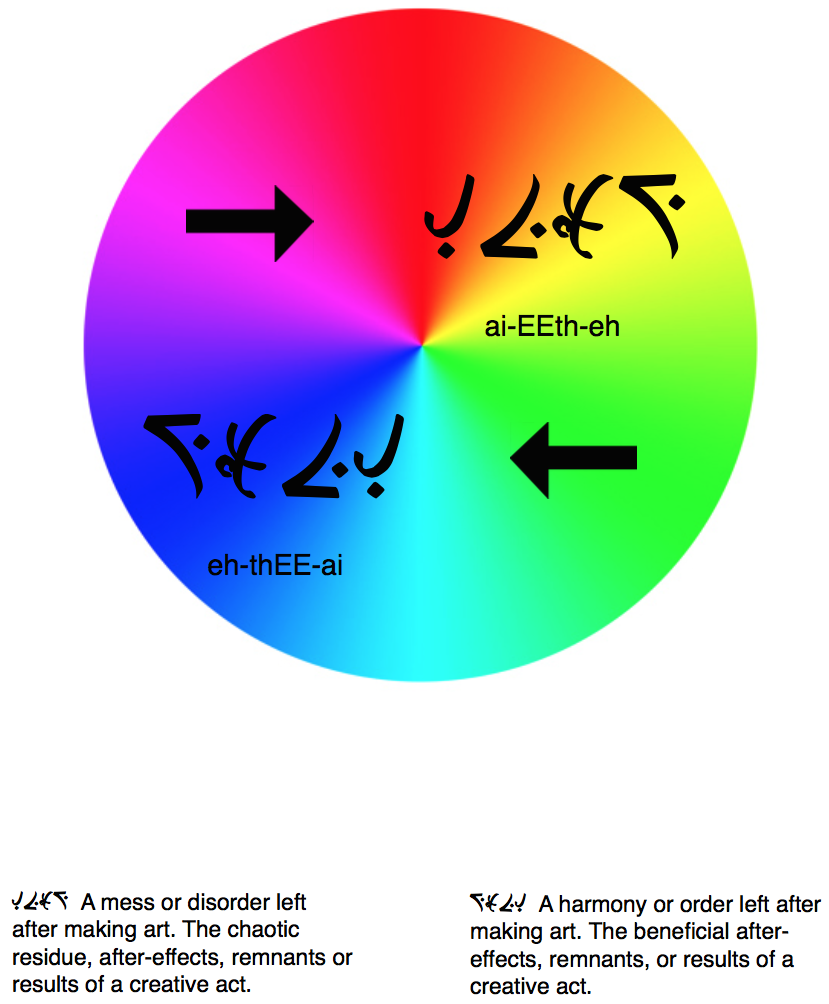
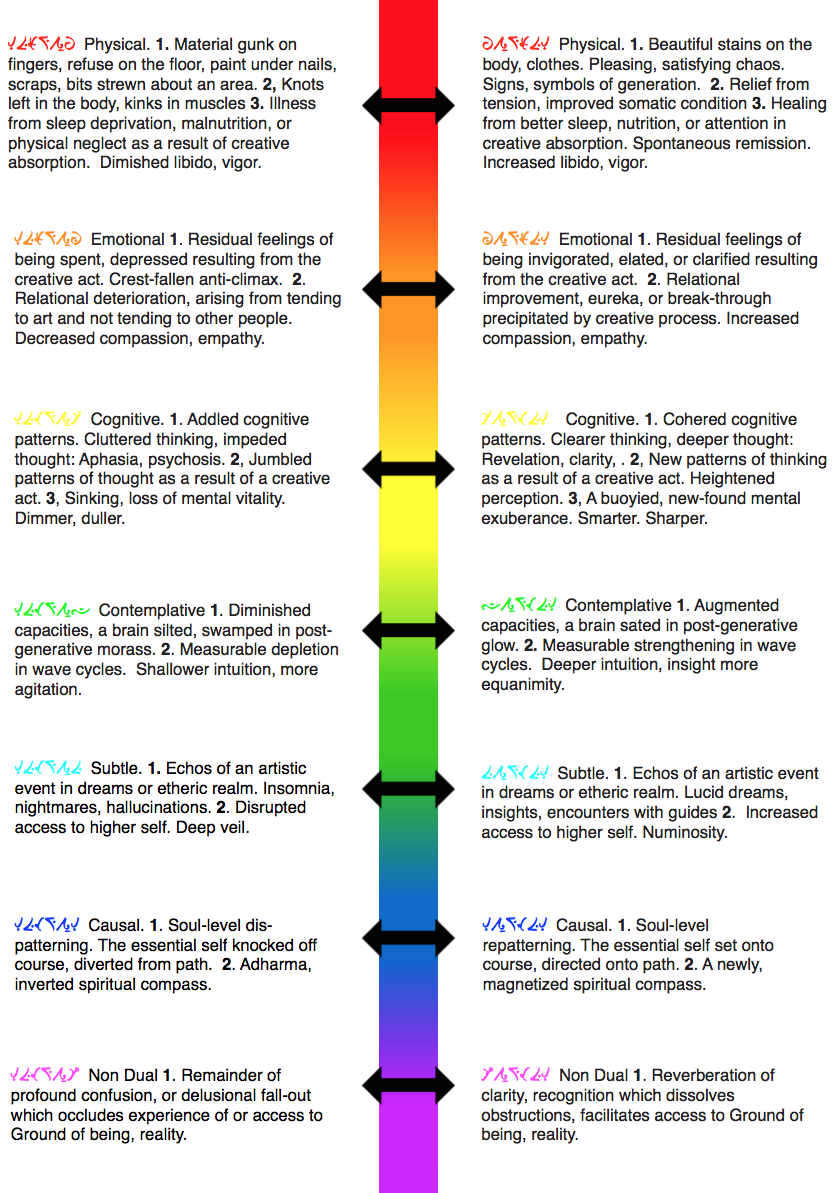
Altitudes in Is are a depth inflection. Whereas most inflections denote person, number, gender, case- in Is there is a category of vertical value. Like inches, the altitude itself is empty. Inches could measure anything, rain, a person’s height, the depth of soil, or the lenght of a fully erect penis. The point is, inches increase in value, so seven inches is always more than six, whatever the inches are measuring. Especially penises.
Same with altitudes. In Is, they folow a transcend-include succession (Integral Semiotics) so the second altitude always transcends but includes the first, the third always transcends but includes the second, and so on.
It’s a new grammatical category of depth. Moderately inflected, agglutinative.
So we’ve looked at directional signifiers, alititudinal signifiers, and an example of a new word. Lastly, a quick look at spelling. It’s nearly impossible to mis-spell a word in Is.
4. Spelling
In Is there is only one sound associated with each phoneme, and various combinations don’t alter the sound system. Long story short is that once you’ve learned the sounds it's a no-brainer spelling any word. English is simply hell to spell (heinous, hors d’oeuvre, pterodactyl, diarrhea) and if the altitudinal and directional aspects of Is seem tricky at first, there’s some consolation in the totally straightforward spelling scheme. It’s the same every time, in every case. Everything spells like it sounds.
Here is the International Phonetic Alphabet chart of Is:
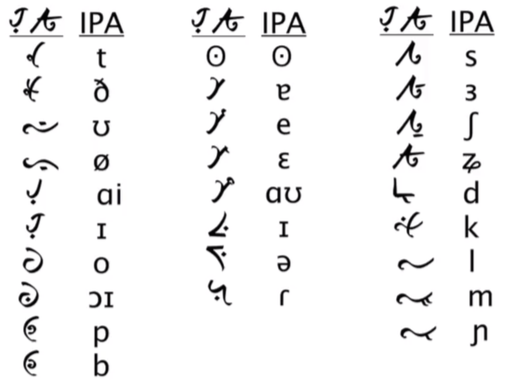
On a final note, I think it’s worth quoting Ken again:
“...any given referent of a particular signifier exists in a specific worldspace, and in order to experience that referent appropriately (if it exists at all), the subject must get itself into that particular worldspace, and only then look around for the referent. Integral Semiotics offers a comprehensive map or framework of most of the known worldspaces available to humans, and thus offers a Map that allows us to understand the Kosmic Address of a particular referent, and hence know where to look for any referent indicated by a signifier. Since most of these worldspaces do not possess simple location or material form, they are likely to be denied reality by most realist, empirical, or behavioral schools—where in fact they are home of the vast majority of those things most humans hold valuable. Integral Semiotics is thus a matter, not just of linguistics, but of emancipation.”—Ken Wilber
I feel what Ken is relating about worldspaces in that quote is important. Before my body ‘dissolved’ during meditation, I had read, thought, and talked about just that kind of worldspace / experience for years. I thought I knew it. But actually I had never experienced it. I knew the signifier, but not referent. The referent was in that worldspace, a direct experience of non-personified awareness.
When I stumbled into that worldspace - spontaneously, unexpectedly - it shocked the living hell out of me. I walked around in a stupor for weeks dumbfounded that it was real- there was, in fact an actual subtle / causal worldspace, just like the meditation traditions said there was. It was more real than a rock I could kick with my foot. I don’t know what to tell you, I guess up until I was dunked in it, I thought the subtle / causal realm was like... a metaphor? It’s not. It’s a worldspace. The signifier isn’t shit without the referent, and the referent is in that worldspace.
A signifier is an invitation to a referent. Why settle for an empty symbol when you can swim in the actual worldspace?
I wonder what other worldspaces wait, undiscovered, and how linguistic creativity might aid the exploration.
In future posts I’ll get into other sexy and fun stuff like typology, grammar, syntax, and... swear words. Lots and lots of swear words.








